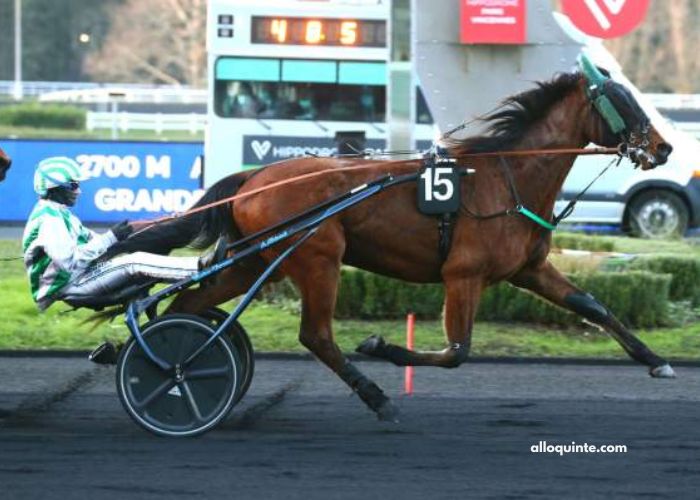In the realm of turf betting, where strategy and insight are paramount, “2 Bases Quinté” represents a nuanced approach to predicting horse racing outcomes. This comprehensive guide delves into the essence of “2 Bases Quinté,” its relevance in turf betting strategies, and practical insights to optimize your betting experience.
Understanding “2 Bases Quinté” in Turf Betting
“2 Bases Quinté” involves selecting two horses that are deemed the most likely to finish in the top positions in a Quinté race, a popular type of French horse racing bet. This strategy aims to balance risk and reward by focusing on horses with strong potential based on form, track conditions, jockey-trainer partnerships, and other critical factors.
The Significance of “2 Bases Quinté” in Turf Betting Strategies
- Risk Management: By selecting two bases (horses) in Quinté races, bettors mitigate the risk associated with choosing a single winner while increasing the chances of a successful bet. This strategy provides a balanced approach to maximizing profitability and minimizing losses.
- Strategic Selection: “2 Bases Quinté” requires thorough analysis and prediction of horse performance. Bettors evaluate historical data, recent form, race conditions, and other variables to identify horses likely to excel in Quinté races, optimizing their betting selections accordingly.
- Flexibility and Adaptability: This strategy allows for flexibility in betting decisions based on evolving race dynamics, late scratchings, jockey changes, and track conditions. Bettors can adjust their strategies in real-time to capitalize on favorable developments.
Key Elements of “2 Bases Quinté” Strategies
To effectively implement “2 Bases Quinté” strategies in your turf betting approach, consider the following key elements.
- Comprehensive Research: Conduct thorough research using reliable sources to evaluate potential bases for Quinté races. Analyze horse form, performance metrics, track preferences, and historical data to inform your betting decisions.
- Statistical Analysis: Utilize statistical models and predictive analytics to assess the probability of selected bases finishing in the top positions. Evaluate factors such as win rates, place rates, and consistency in race performances to enhance prediction accuracy.
- Value Betting Opportunities: Identify value betting opportunities where the odds offered by bookmakers exceed the predicted probability of selected bases’ success. Look for discrepancies in odds based on your analysis and market trends.
- Risk Mitigation: Implement risk management strategies, such as setting betting limits, diversifying bets across multiple races or bet types, and hedging bets to minimize potential losses and optimize returns.
Strategies for Optimizing “2 Bases Quinté” Betting
To maximize success with “2 Bases Quinté” strategies, consider the following practical approaches.
- Pre-Race Analysis: Conduct in-depth analysis and prediction of selected bases’ performance using historical data and expert insights. Evaluate factors influencing race outcomes and adjust your betting strategy accordingly.
- Real-Time Adjustments: Stay updated with real-time race information, including late scratchings, jockey changes, and track conditions. Adapt your betting decisions based on updated insights and evolving race dynamics.
- Diversified Betting: Explore diverse betting options within Quinté races, such as exacta, trifecta, or quartet bets, to leverage strategic advantages and enhance potential returns. Diversifying bets spreads risk and optimizes betting opportunities.
- Continuous Improvement: Evaluate the effectiveness of “2 Bases Quinté” strategies through post-race analysis and performance assessment. Learn from betting outcomes, refine your approach based on insights gained, and continuously improve your betting strategies.
Practical Applications of “2 Bases Quinté” Strategies
In practice, “2 Bases Quinté” strategies can be applied in various scenarios to optimize your turf betting experience.
- Race-Specific Analysis: Tailor your betting strategies based on race-specific factors, such as distance, track conditions, and competition level indicated in Quinté races.
- Market Trends Analysis: Monitor market trends and betting patterns influenced by “2 Bases Quinté” strategies to identify strategic advantages and capitalize on favorable betting opportunities.
- Performance Evaluation: Conduct ongoing evaluation of selected bases’ performances in Quinté races to assess their reliability and effectiveness in guiding your betting decisions over time.
Conclusion
“2 Bases Quinté” represents a strategic approach to turf betting, emphasizing risk management, strategic selection, and value betting opportunities in Quinté races. By mastering the art of comprehensive research, leveraging statistical analysis, and adapting strategies to race dynamics, bettors can enhance their profitability and enjoyment in horse racing betting.




